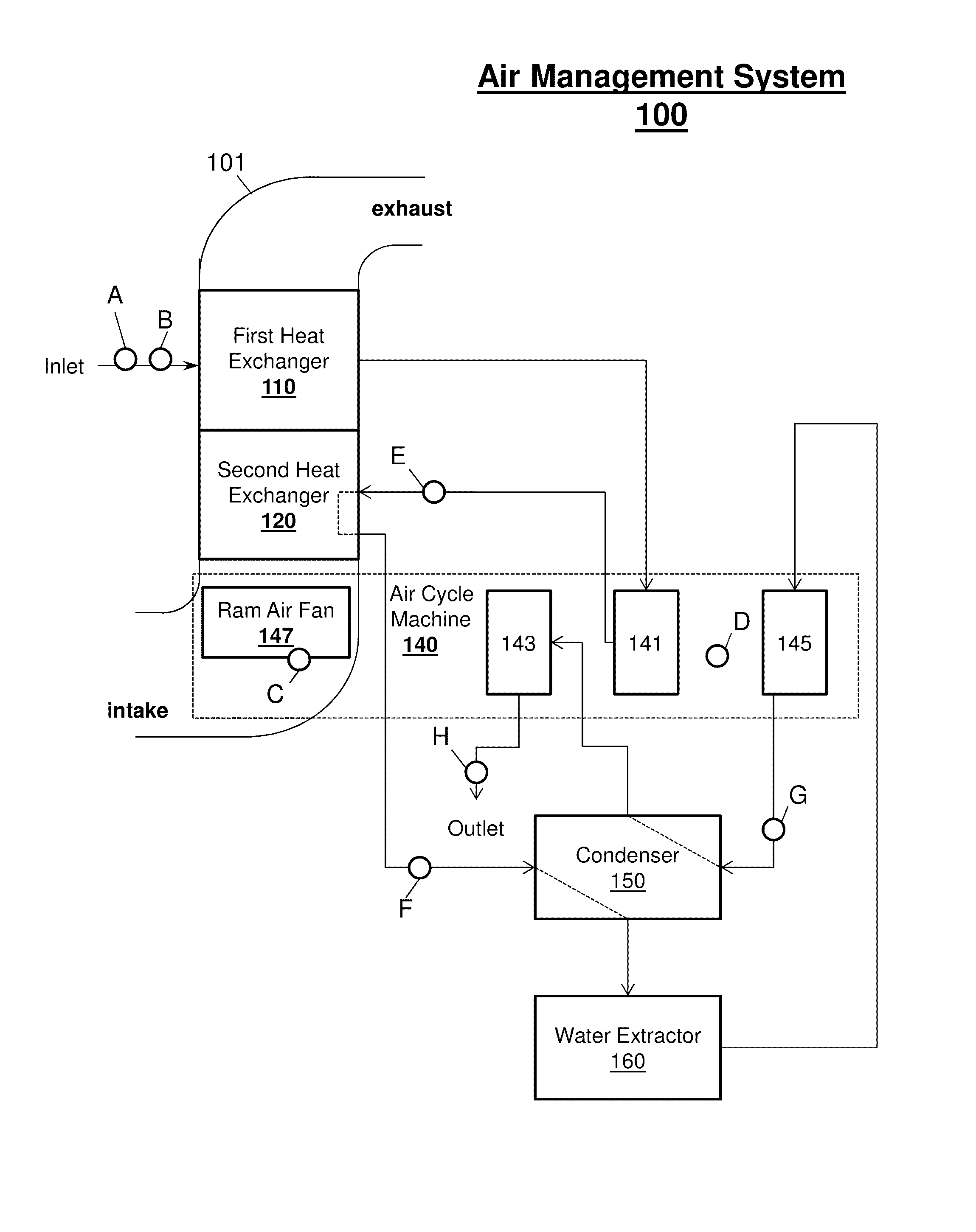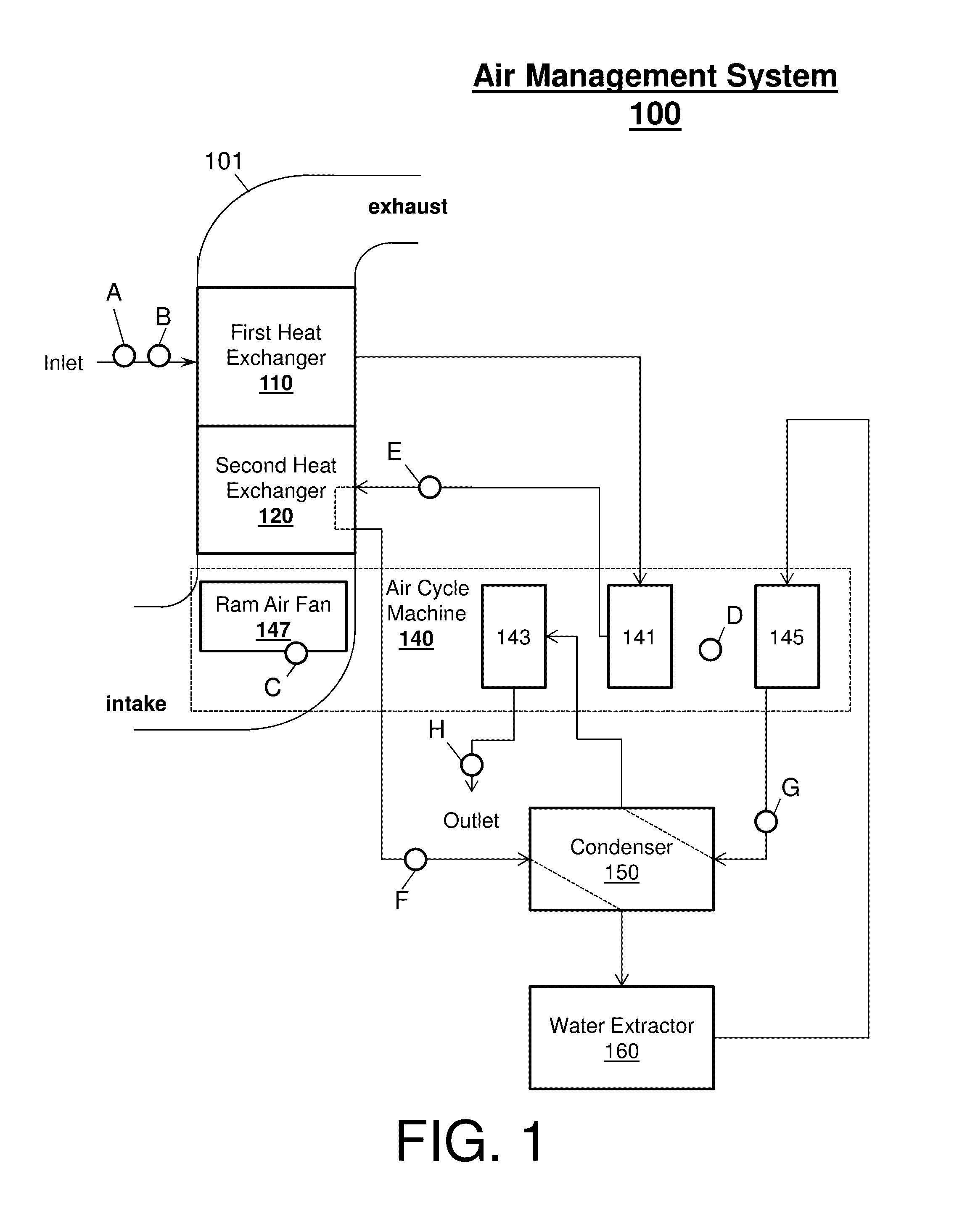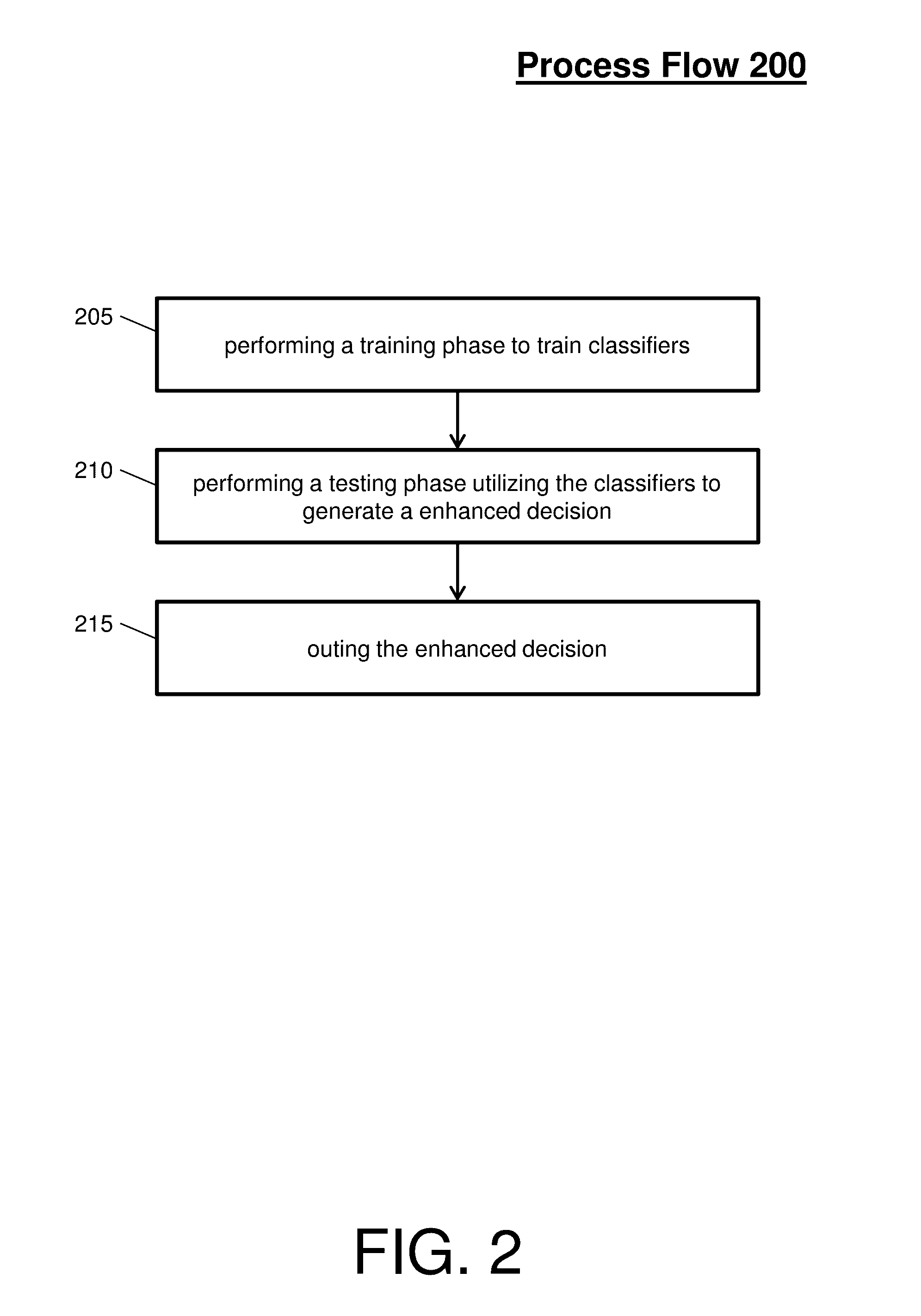Optimal sensor selection and fusion for heat exchanger fouling diagnosis in aerospace systems
a technology of aerospace systems and sensors, applied in the direction of instruments, energy-efficient board measures, lighting and heating apparatus, etc., can solve the problems of aircraft heat exchanger performance degradation, difficult diagnosis of fouling, and high cos
- Summary
- Abstract
- Description
- Claims
- Application Information
AI Technical Summary
Benefits of technology
Problems solved by technology
Method used
Image
Examples
Embodiment Construction
[0012]A detailed description of one or more embodiments of the disclosed apparatus and method are presented herein by way of exemplification and not limitation with reference to the Figures.
[0013]As indicated above, the current methodologies for detecting fouling provide limited efficiency and accuracy due to the large amount of data and limited analysis capabilities. Thus, what is needed is a mechanism that utilizes algorithms of optimal sensor selection and fouling diagnosis in conjunction with machine learning tools.
[0014]In general, embodiments disclosed herein may include a system, method, and / or computer program product (herein diagnosis system) that performs a heat exchanger fouling diagnosis of a complex networked system. Fouling diagnosis is a detection and identification of a fouling level of a blocked or congested heat exchanger, which is unable to cool a medium at an optimal efficiency, within the complex networked system.
[0015]The complex networked system (e.g., an envi...
PUM
| Property | Measurement | Unit |
|---|---|---|
| temperature | aaaaa | aaaaa |
| fouling severity | aaaaa | aaaaa |
| temperatures | aaaaa | aaaaa |
Abstract
Description
Claims
Application Information
 Login to View More
Login to View More - R&D
- Intellectual Property
- Life Sciences
- Materials
- Tech Scout
- Unparalleled Data Quality
- Higher Quality Content
- 60% Fewer Hallucinations
Browse by: Latest US Patents, China's latest patents, Technical Efficacy Thesaurus, Application Domain, Technology Topic, Popular Technical Reports.
© 2025 PatSnap. All rights reserved.Legal|Privacy policy|Modern Slavery Act Transparency Statement|Sitemap|About US| Contact US: help@patsnap.com



